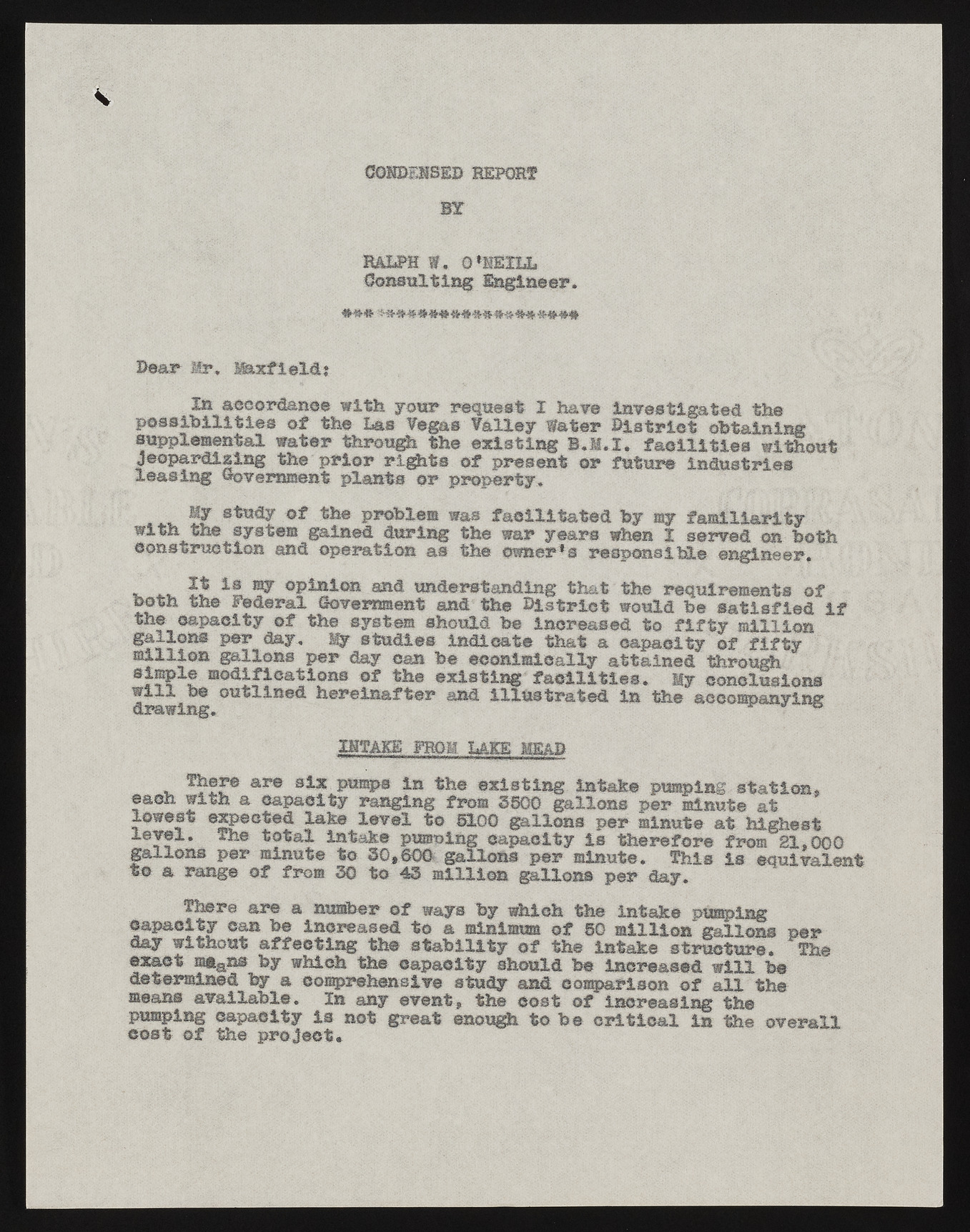Copyright & Fair-use Agreement
UNLV Special Collections provides copies of materials to facilitate private study, scholarship, or research. Material not in the public domain may be used according to fair use of copyrighted materials as defined by copyright law. Please cite us.
Please note that UNLV may not own the copyright to these materials and cannot provide permission to publish or distribute materials when UNLV is not the copyright holder. The user is solely responsible for determining the copyright status of materials and obtaining permission to use material from the copyright holder and for determining whether any permissions relating to any other rights are necessary for the intended use, and for obtaining all required permissions beyond that allowed by fair use.
Read more about our reproduction and use policy.
I agree.Information
Digital ID
Permalink
Details
More Info
Rights
Digital Provenance
Publisher
Transcription
mmmBED mpmt BY MLFH W. 0*M£ILL Oonsultlng Engineer. Star Mr, Maxfleld? la accordance with your request I haw© investigated the possibilities of the Las Yogas Valley Water Sistrict obtaining supplemental water through the existing B.M.X, facilities without jeopardising the prior rights of present or future industries leasing ©owernment plants or property. My study of the problem was facilitated by my familiarity with the system gained during the war years when X served on both construction said operation as the owner’s responsible engineer. * _ i9 opinion and understanding that the requirements of both the Federal government and the district would be satisfied if the oapaclty ©f the system should be increased to fifty million gallons per day, My studies indicate that a capacity of fifty million gallons per day can be eoonlmically attained through *£}£*• modifications of the existing facilities. My conclusions will be outlined hereinafter and illustrated is the accompanying drawing. ihtafe from lake mm . lllfl# are six pumps in the existing intake .peeping station* each with a capacity ranging from 3500 gallons per minute at lowest expected lake level to 5100 gallons per minute at highest level, the total intake pumping capacity is therefore fro® 21,000 gallons per minute to 30,600 gallons per minute, this is equivalent to a range of from 30 to 43 million gallons per day. there are a number of ways by which the intake pumping capacity can be increased to a minimum of 50 million gallon's p©r day without affecting the stability of the intake structure, the exact means by which the capacity should be increased will be determined by a comprehensive study and comparison of aH the means available. In any event, the cost of increasing the pumping capacity is not great enough to be critical in the overall cost of the project.

